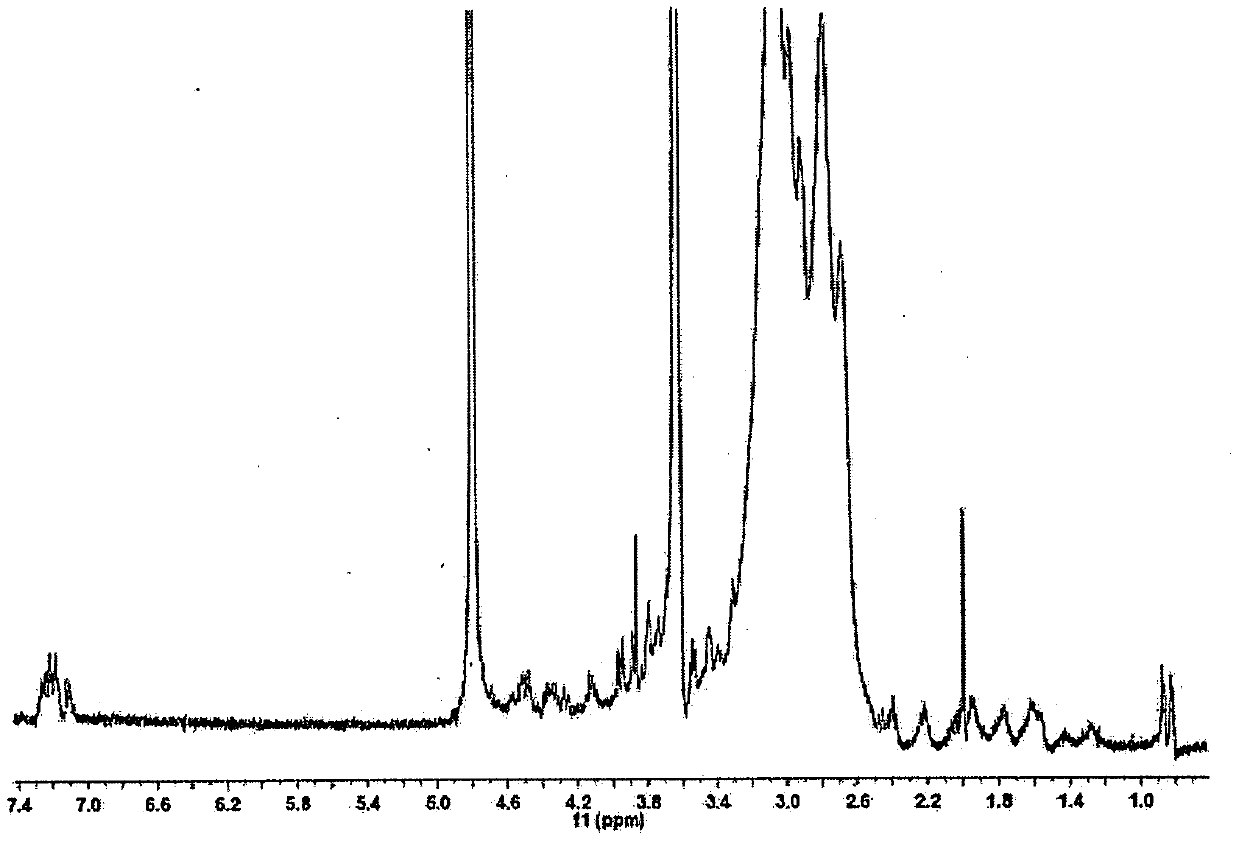ROS-sensitive tumor-targeted gene delivery system and preparation method thereof
A tumor-targeting, gene-based technology, applied in gene therapy, anti-tumor drugs, pharmaceutical formulations, etc., can solve the problems of tumors that cannot be surgically cut, immune reactions, toxic and side effects, etc., and achieve good tumor treatment effects and biocompatibility Good sex and reduced cytotoxicity
- Summary
- Abstract
- Description
- Claims
- Application Information
AI Technical Summary
Problems solved by technology
Method used
Image
Examples
Embodiment 1
[0047] like figure 1 Synthetic steps shown, first synthesize VPBE, add 4-vinylphenylboronic acid, 3-allyloxy-1,2-propanediol and 1 gram of anhydrous sodium sulfate in anhydrous dichloromethane with a molar ratio of 1:1.5 , stirred overnight in a 40-degree oil bath, removed anhydrous sodium sulfate by filtration, and finally separated and purified the final product VPBE by column chromatography on a silica gel column at a ratio of petroleum ether / ethyl acetate 3:1. Then carry out sulfhydryl modification on low molecular weight polyethyleneimine, add polyethyleneimine and propylene sulfide with a molar ratio of 1:2 in an appropriate amount of methanol solution, nitrogen protection, react at 60 degrees for 12 hours, and remove by rotary evaporation Methanol and ether were precipitated and purified three times to obtain mercapto-modified polyethyleneimine. Then, the mercapto-modified polyethyleneimine and VPBE with a molar ratio of 1:5, and a catalytic amount of 2,2-dimethoxy-phe...
Embodiment 2
[0049] Quantitatively weigh the pure uncrosslinked BPEI 1.2K , crosslinked BPEI and SP-crosslinked BPEI, dissolved in pure water to make the final concentration 1mg / mL. The above three materials were dropped into the 200 μg / mL pDNA solution according to the corresponding N / P ratio concentration from 5 to 20, the pipette gun was quickly blown and mixed, vortexed for 30 seconds, and left at room temperature for 30 minutes to prepare each nanometer Particles, the DLS particle size and zeta potential value of the nanoparticles were measured by a Malvern particle size analyzer, such as figure 2 A, B shown. Freshly prepare the nanoparticle solution (N / P=10) according to the above method, drop a drop onto the carbon support film copper grid, dry under the infrared lamp, observe the morphology of the nanoparticle under the TEM microscope, as shown in FIG. figure 2 D shows. It can be seen that when N / P=10, nanoparticles with uniform and stable particle size can be formed.
Embodiment 3
[0051] Place crosslinked BPEI in 1mM H 2 o 2 Treated in aqueous solution for 12 hours, freeze-dried, re-dissolved in heavy water after freeze-drying, NMR comparison H 2 o 2 Changes in hydrogen spectra before and after treatment, such as image 3 As shown in A, it can be seen that the hydrogen displacement on the benzene ring in the cross-linking agent molecule has changed, which proves that the phenyl boronate bond is in the H 2 o 2 Disconnect under existence, show the ROS sensitivity of material; Prepare crosslinked BPEI / pDNA nanoparticle (N / P=10) by the method described in embodiment 2, respectively through different treatments, including H 2 o 2 and heparin, gel electrophoresis results show that the material can completely encapsulate pDNA, and has ROS response release characteristics (such as image 3 Shown in B); H 2 o 2 After the treatment, the particle size of the nanoparticles gradually increased, and in the last 20 hours, it was seen that the particle size exc...
PUM
| Property | Measurement | Unit |
|---|---|---|
| particle diameter | aaaaa | aaaaa |
| particle diameter | aaaaa | aaaaa |
| concentration | aaaaa | aaaaa |
Abstract
Description
Claims
Application Information
 Login to View More
Login to View More - R&D
- Intellectual Property
- Life Sciences
- Materials
- Tech Scout
- Unparalleled Data Quality
- Higher Quality Content
- 60% Fewer Hallucinations
Browse by: Latest US Patents, China's latest patents, Technical Efficacy Thesaurus, Application Domain, Technology Topic, Popular Technical Reports.
© 2025 PatSnap. All rights reserved.Legal|Privacy policy|Modern Slavery Act Transparency Statement|Sitemap|About US| Contact US: help@patsnap.com



